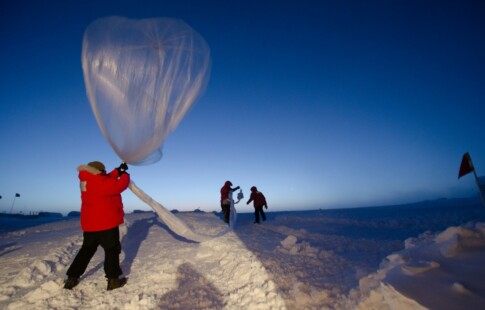
The Major Causes of Greenhouse Effect
We are reader-supported. When you buy through links on our site, we may earn affiliate commission.
On Friday, November 19th, the house passed the Build Back Better act supporting green infrastructure. President Biden plans on using the legislation to increase climate change prevention efforts. The act’s primary goal is minimizing greenhouse gas emissions.
There are various ways to decrease atmospheric pollution, from regulating harmful construction materials to supporting electric vehicles (EVs). Biden’s bill will allocate $2 trillion throughout the sustainability sector, improving ecological conditions. Over time, societal and structural changes will reduce the causes of greenhouse effect, preserving the global ecosystem.
What is the Enhanced Greenhouse Effect?
Before evaluating the causes of climate change, we must assess the enhanced greenhouse effect as an independent phenomenon. When humans drive gas-powered cars, heat their homes, charge their appliances and manufacture goods, they contribute to air pollution. As emissions accumulate in the atmosphere, they change its composition and limit its ability to regulate surface temperatures.
Earth relies on a consistent atmospheric composition to maintain life-sufficient temperatures, supporting the global ecosystem. Naturally, the atmosphere absorbs shortwave radiation and produces heat, warming the surface. It also collects excess energy and sends it to space, preventing overheating.
When humans release greenhouse gases into the environment, they increase the atmosphere’s light-to-heat conversion rate. Emissions also trap extra energy in the atmosphere, filtering it back through the heat production process. Over time, the overproduction and entrapment of heat increases Earth’s temperature, creating harmful ecological impacts.
How Does it Affect the Global Ecosystem?
The enhanced greenhouse effect causes various forms of ecological degradation. One of the most recognizable impacts is on summer temperatures. When individuals discuss climate change, they generally reference an increase in summer heat.
Urban areas experience more extreme temperature increases compared to rural regions because of the urban heat index. The low vegetation rates and high transportation emissions in cities create a micro-level greenhouse effect. As the frequency of summer heat waves rises, individuals experience heatstroke, minimizing a community’s health and well-being.
The high concentration of emissions in urban areas also degrades individuals’ health, creating respiratory challenges. When community members inhale air pollutants, they experience an increased risk of lung cancer, respiratory infections and asthma attacks. The enhanced greenhouse effect also negatively impacts animals.
As the global temperature changes, natural habitats change, minimizing protective aspects and food supplies. Species experience forced migration from environmental alterations. When animals retreat to new homes, they experience vulnerability in foreign places, decreasing their safety and stability.
The enhanced greenhouse effect additionally impacts humanity’s food source, limiting agricultural production. As the global temperature rises, the evaporation rate follows. While water displacement increases precipitation in some regions, it leaves others ridden with drought.
Areas like California, which America relies on for fruit and vegetable production, now face growth challenges. Farmers try to meet consumer demands by over-farming and using synthetic additives. Monocropping methods can increase soil erosion, depleting Earth’s nutrients, leaving regions unable to produce vegetation.
If farmers are unable to meet global dietary needs, humanity faces vital impacts. Nearly 811 million individuals experience hunger every day around the globe. If we are unable to minimize the enhanced greenhouse effect, society may face extinction.
Human Causes of Greenhouse Effect
Individuals can minimize adverse climate change effects by evaluating their contributing behaviors. While many EV manufacturers advertise their automobiles as sustainable alternatives to gas-powered options, they still influence greenhouse gas emissions. Over 60% of America’s electricity supply derives from fossil fuels.
During combustion, the electricity sources release greenhouse gases into the atmosphere. EVs produce zero tailpipe emissions, and they influence secondary pollution. Charging all electric devices and systems also expands an individual’s carbon footprint.
Dietary consumption patterns also influence climate change. Beef production creates methane emissions – a more potent greenhouse gas than carbon dioxide. The agricultural sector produces nearly 9.6% of emissions in America.
Part of the plant-based movement correlated with shrinking society’s carbon footprint. We can minimize emissions to prevent climate change advancements following a few sustainability-enhancement methods.
How Can Humans Minimize Environmental Degradation?
Individuals can increase climate change prevention efforts by reducing emissions. As technology advances, there are ways society may minimize its reliance on fossil fuels. Renewable energy sources offer a sustainable alternative to emission-producing options.
You can install solar panels on your roof to shrink your residential carbon footprint, reducing atmospheric degradation. Individuals may also charge EVs with solar electricity, decreasing transportation-related emissions. It additionally minimizes a consumer’s utility costs, helping them save money and the planet.
Consumers can also prevent the enhanced greenhouse effect by eating a meatless diet. Decreasing agricultural emissions protects the atmosphere and produces better growth conditions.
Expanding Your Eco-Consciousness
The most effective way to shrink your carbon footprint is by expanding your eco-consciousness. You may increase your awareness of environmental challenges by referencing current news articles, government statements and scientific research. Additionally, you can improve your community’s commitment to emission-reduction efforts by educating your peers.
Share on
Like what you read? Join other Environment.co readers!
Get the latest updates on our planet by subscribing to the Environment.co newsletter!
About the author
Jane Marsh
Starting from an early age, Jane Marsh loved all animals and became a budding environmentalist. Now, Jane works as the Editor-in-Chief of Environment.co where she covers topics related to climate policy, renewable energy, the food industry, and more.





